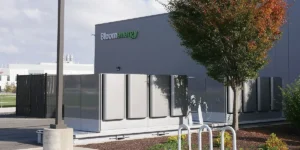Green hydrogen to be produced at Baltic states’ largest onshore wind farm after EU backs €100m loan deal

The entire output from a proposed 264MW onshore wind farm in Lithuania will be used to produce green hydrogen for the country’s biggest fertiliser producer, Achema, and displace natural gas in ammonia production, after its developer secured €326m ($352m) of loans from European banks.
The Pagėgiai windfarm, which is estimated to cost €460m in total, will be the largest greenfield onshore project in the Baltic states once built in the third quarter of 2026.
However, while Achema — which owns the wind project’s developer Renerga — has committed to using 100% of the 602GWh of estimated annual renewable electricity output for green H2 production, it has not given further details on how much hydrogen it plans to produce nor the electrolyser it will install.
The fertiliser producer estimates that 80% of its emissions come from its two ammonia production units.
Achema also accounts for more than half of all natural gas consumption in Lithuania, which imports this fossil fuel due to the lack of domestic production.
Up until 2014, when the country built its first LNG terminal, Lithuania was also solely dependent on a Russian gas pipeline. The price spike in 2022 following Russia’s invasion of Ukraine prompted Achema to temporarily shut down production.
Article continues below the advert
As such, the plan to shift toward green hydrogen could represent a way to decarbonise its products while shoring up energy security.
The loans came from German export bank KfW IPEX, German commercial bank Nord/LB and the Nordic Investment Bank, an international investment bank for the Nordics region and Baltic states.
The €100m loan from the Nordic Investment Bank was backed by a €43.5m guarantee by the European Union’s InvestEU programme.
“This loan is in line with both of our commitments to member countries — to increase their productivity and respect the environment,” says the Nordic Investment Bank’s president and CEO André Küüsvek.
“This not only helps Lithuania to expand renewable energy capacity and reduce dependence on natural gas imports, but also promotes the development of green technologies, thus having a positive impact on the entire region.”




